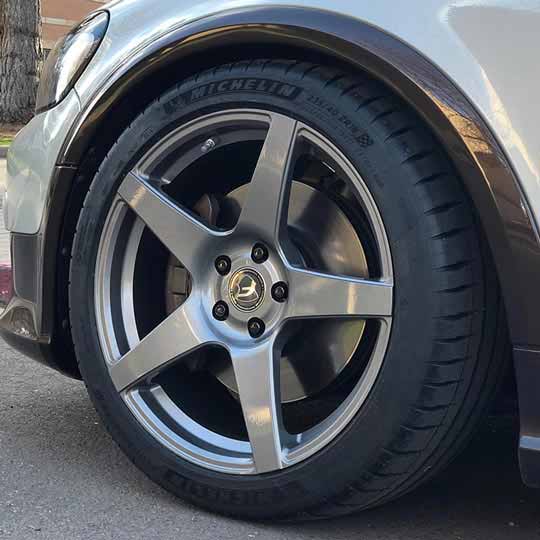Why do this modification?
The Volvo P1 came equipped with two fundamentally different headlight configurations. One utilized halogen bulbs with a projector, and the other, a High Intensity Discharge bulb in a Bi-Xenon projector.
The Halogen bulb is just like a standard light bulb, it uses a filament and is the cheapest, and easiest way for auto manufacturers to get lights on the car. Traditionally, halogen bulbs have been made to work in reflector housings, similar to something like a desk lamp, but with a reflective coating inside which helps get the most light out and on to the road.
What Volvo did for the P1, was use a reflector bowl, and carefully attached a magnifying glass hemisphere on the end to amplify the available light on the road. This is called a projector. Compared to headlights from years past, this was a good step in the right direction. Many cars some standard with projectors now, as it's far better than reflector headlights at getting the most light on the road. Although, to today's safety standards many halogen-bulb equipped cars recieve poor ratings from the IIHS
This is where the High Intensity Discharge (or HID) bulbs shine. By utilizing a quarts glass capsule of gas rather than a filament, the bulb is much brighter, consumes less power, and is much more suited for making night (and daytime) driving safer. Although being more than 2x brighter, the HID Bi-Xenon equipped projectors have a metal "shield" that cuts-off the light so to not blind oncoming drivers. When the driver wishes to use their high beams, the shield pivots downwards, exposing more of the HID bulb, producing more light on the road.
For many of us Volvo fans, we're stuck in the past with halogen bulb technology with no easy way to reliably convert to an HID Bi-Xenon arrangement. If you are one of the lucky few who have Bi-Xenon projectors factory equipped, there is still some benefits in optics that can be made, but you're still leauges ahead of the halogen folks.
D.I.Y. and How-To
Click the picture to access the guide.
Measure Your Camber At Home
Here I show you how to get a measurement of camber at home or in the garage. You should be on a level surface or this will not work properly! Also, this only serves as a estimate, and you should always have a professional do the alignment.

